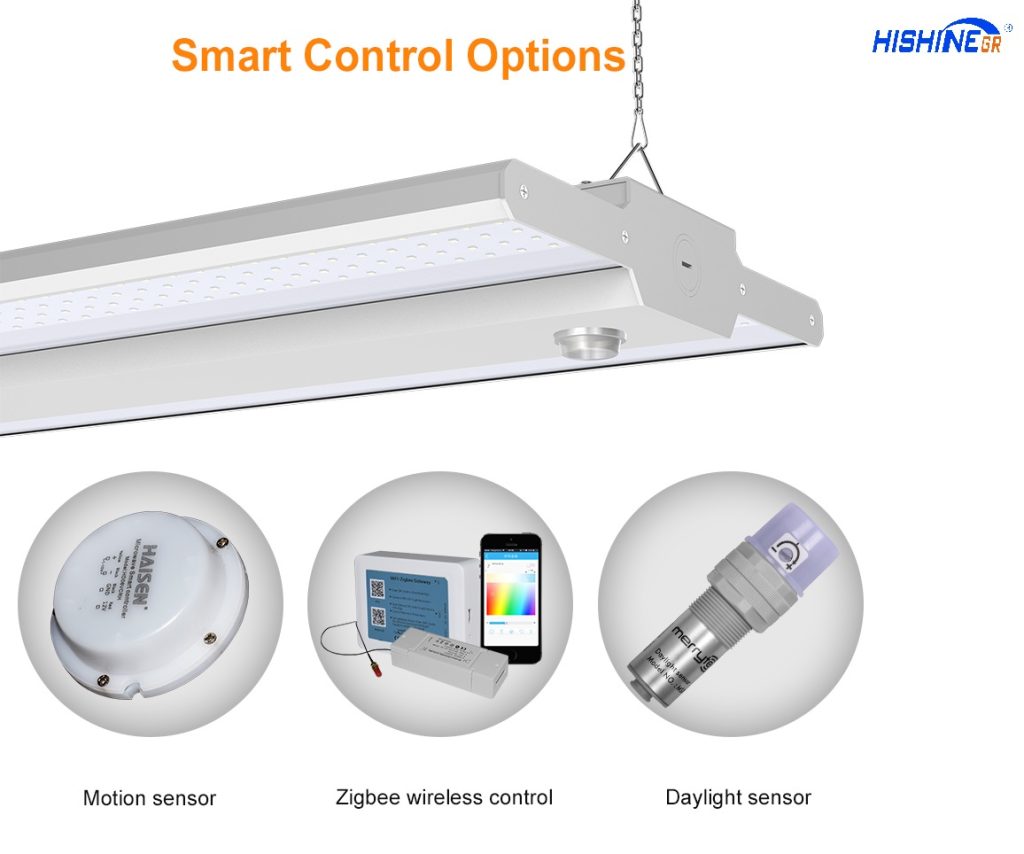What is Sensors?
Indoor warehouse lighting is crucial for ensuring the safety and productivity of workers in large industrial spaces. Often, high bay lights or linear lights are used to illuminate these areas. However, adding sensors to these lights can greatly improve their efficiency and functionality.
There are three main types of sensors commonly used in warehouse lighting: motion sensors, PIR sensors, and daylight sensors. Each of these sensors has its own unique features and benefits.
PIR (passive infrared) sensors
PIR (passive infrared) sensors work similarly to motion sensors, but instead of detecting movement, they sense the heat and radiation emitted by a person or object. This makes them ideal for areas where people may be present but not necessarily moving, such as assembly lines or workstations. PIR sensors can also help improve safety by alerting workers to the presence of potentially hazardous machinery or equipment.
How can I edit the masks ?
Motion sensors
Motion sensors are designed to detect movement within a specific range and direction. When movement is detected, the sensor triggers the lights to turn on, providing illumination to the surrounding area. This is particularly useful in areas of the warehouse that are not always occupied, such as storage rooms or loading docks. By only turning on when needed, motion sensors can help reduce energy consumption and lower operating costs.
Daylight sensors
Daylight sensors, as the name suggests, are designed to measure the amount of natural light in a room or space. When the sensor detects sufficient daylight, it can automatically dim or turn off the artificial lights. This not only reduces energy consumption but also helps create a more comfortable working environment by reducing glare and harsh lighting.
So How to choose sensors for warehouse lights?
So why add sensors to warehouse lights? The main reason is efficiency. By adjusting the lighting output based on occupancy or natural light levels, sensors can help reduce energy consumption and lower operating costs. Additionally, sensors can help improve safety and create a more comfortable working environment for employees.
When choosing industrial lighting for a warehouse, there are several factors to consider. First and foremost is the amount and type of lighting needed for the space. High bay lights are typically used for ceilings over 20 feet, while linear lights are better suited for ceilings under 20 feet.
Next, consider the specific needs of the warehouse. Will there be areas that are not always occupied? Will workers be performing detailed tasks that require precise lighting? Once these factors are determined, the appropriate sensors can be selected based on their specific benefits and compatibility with the lighting system.
It is important to note that while sensors can greatly improve the efficiency and functionality of warehouse lighting, they must be properly installed and calibrated to ensure optimal performance. Working with a qualified lighting professional is highly recommended to ensure the system is set up correctly and operating at its highest potential.
In conclusion, adding sensors to indoor warehouse lighting can greatly improve efficiency, safety, and comfort for workers. By choosing the appropriate sensors based on the needs of the space, industrial lighting can provide optimal illumination while reducing energy consumption and operating costs.


